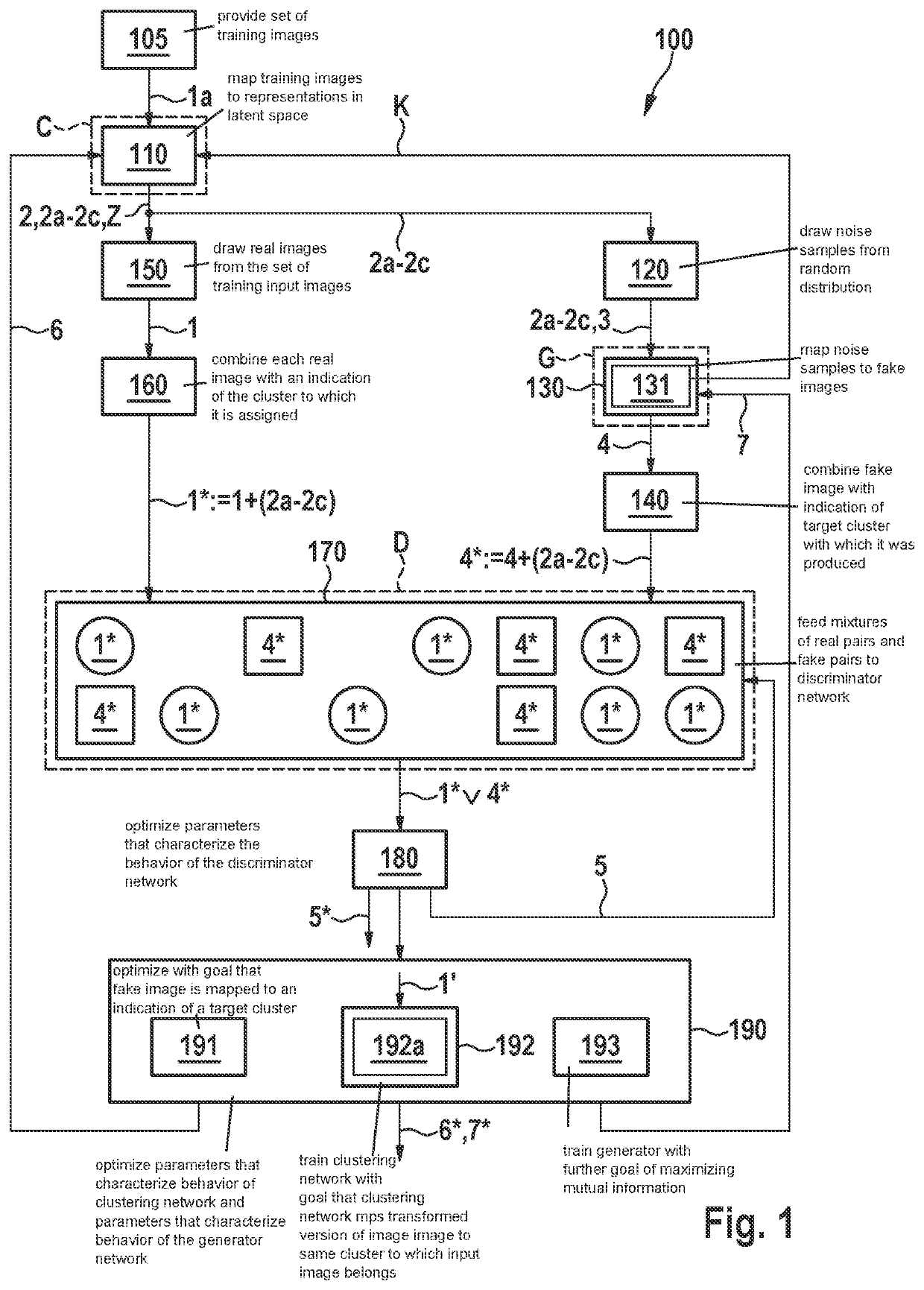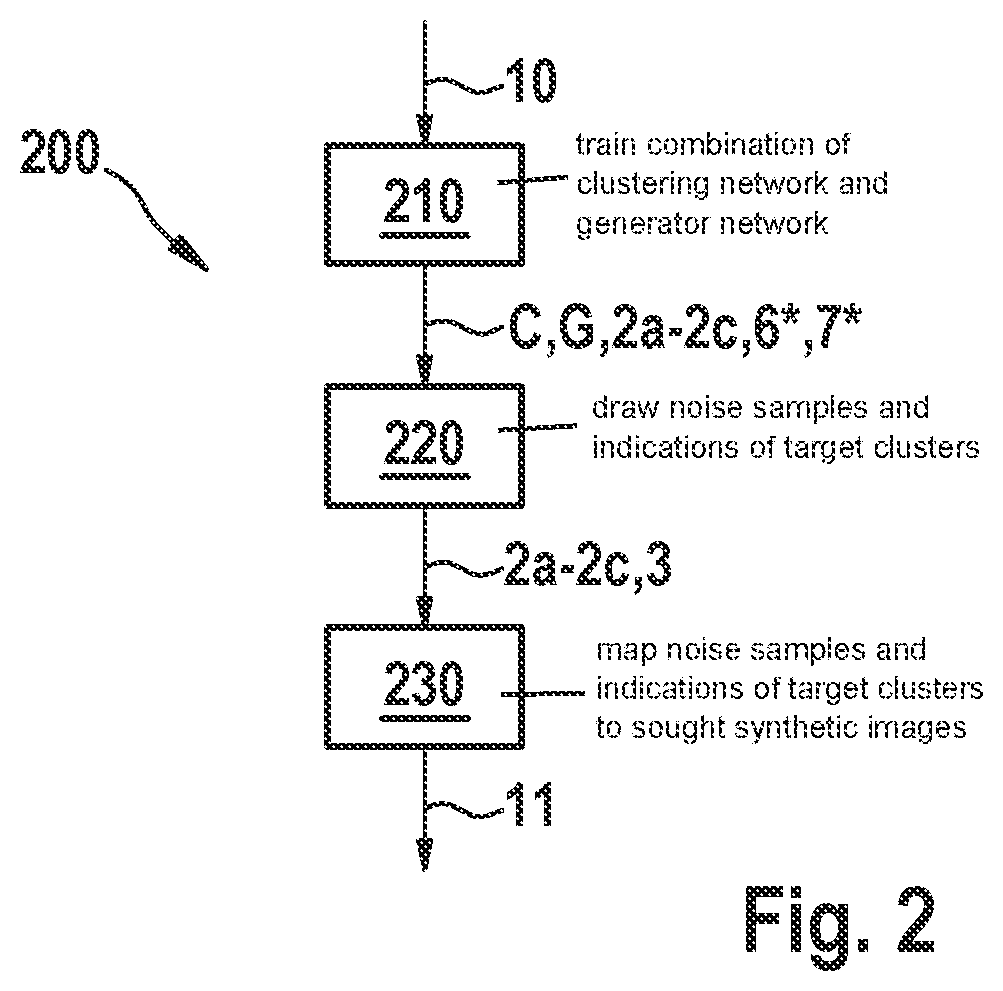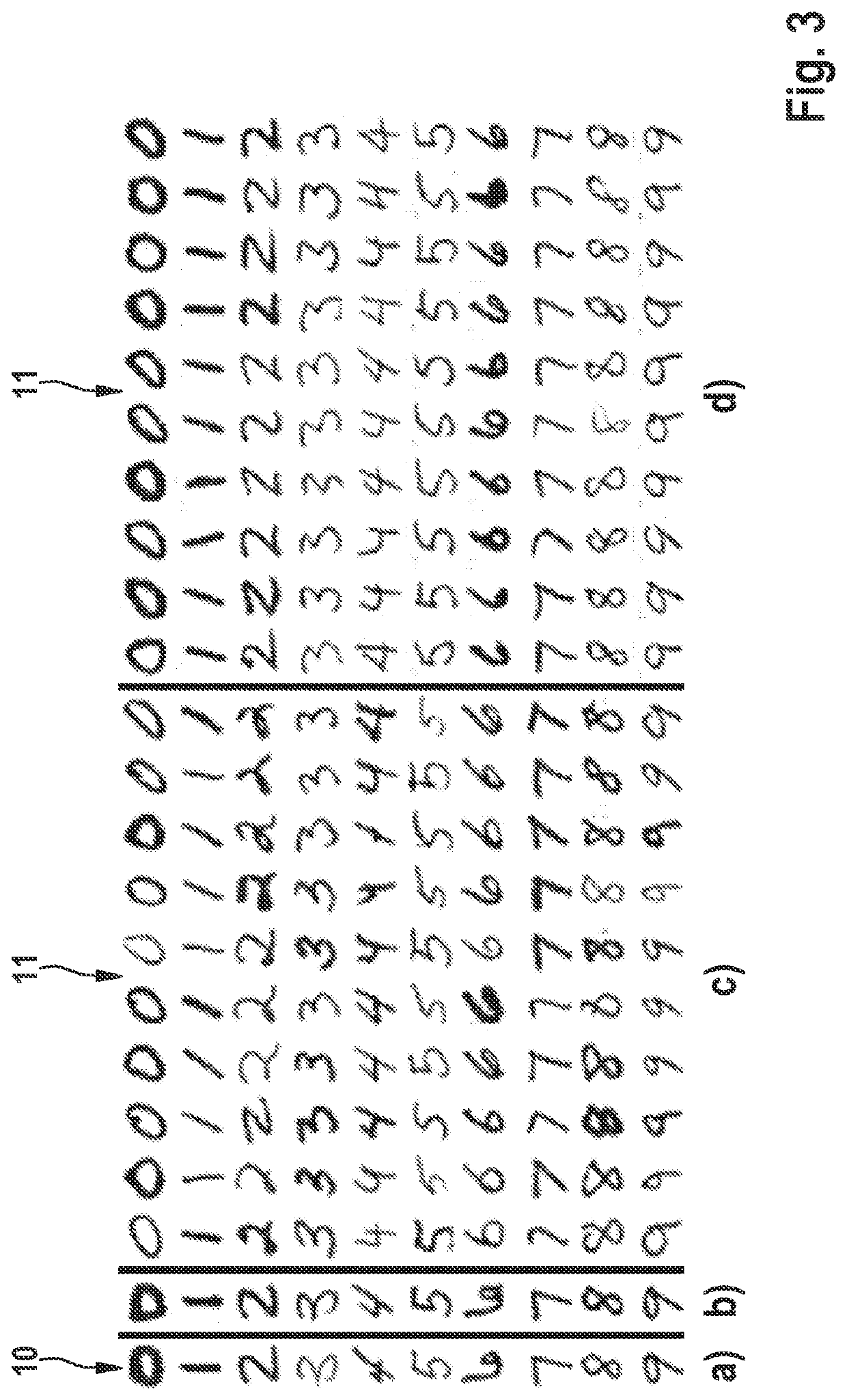Cascaded cluster-generator networks for generating synthetic images
- Summary
- Abstract
- Description
- Claims
- Application Information
AI Technical Summary
Benefits of technology
Problems solved by technology
Method used
Image
Examples
Embodiment Construction
[0055]In the following, the present invention is illustrated using Figures without any intention to limit the scope of the present invention. The Figures show:
[0056]FIG. 1 shows an exemplary embodiment of the method 100 for training a combination of a clustering network C and a generator network G, in accordance with the present invention.
[0057]FIG. 2 shows an exemplary embodiment of the method 200 for generating synthetic images 11 from given images 10, in accordance with the present invention.
[0058]FIG. 3 shows examples of synthetic images 11 generated by the method 200 based on the MNIST dataset of handwritten digits.
[0059]FIG. 4 shows exemplary embodiment of the method 300 for training an image classifier 20, in accordance with the present invention.
DETAILED DESCRIPTION OF EXAMPLE EMBODIMENTS
[0060]FIG. 1 is a schematic flow chart of an embodiment of the method 100 for training a combination of a clustering network C and a generator network G.
[0061]In step 105, a set of training ...
PUM
 Login to View More
Login to View More Abstract
Description
Claims
Application Information
 Login to View More
Login to View More - R&D
- Intellectual Property
- Life Sciences
- Materials
- Tech Scout
- Unparalleled Data Quality
- Higher Quality Content
- 60% Fewer Hallucinations
Browse by: Latest US Patents, China's latest patents, Technical Efficacy Thesaurus, Application Domain, Technology Topic, Popular Technical Reports.
© 2025 PatSnap. All rights reserved.Legal|Privacy policy|Modern Slavery Act Transparency Statement|Sitemap|About US| Contact US: help@patsnap.com



